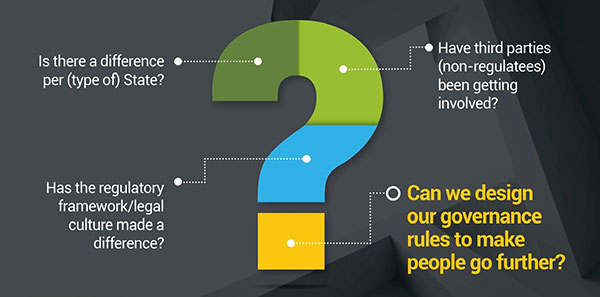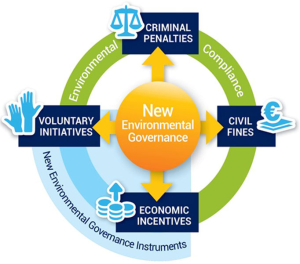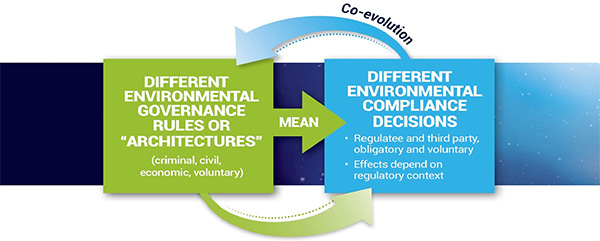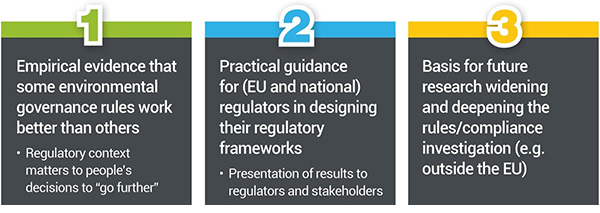How can we design our environmental governance laws to maximise environmental compliance?
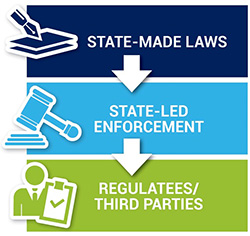 Non-compliance with the EU’s environmental rules is one of the key weaknesses of the EU’s environmental policy. This research investigates the influence that environmental governance laws have on compliance decisions, and how we might best design our laws to maximise compliance. One of the most important trends in European environmental regulatory techniques over the past decade has been the shift from hierarchical, state-led government via command-and-control techniques, to decentralised, society-led governance by local private actors, including environmental NGOs but also private individuals and companies.
Non-compliance with the EU’s environmental rules is one of the key weaknesses of the EU’s environmental policy. This research investigates the influence that environmental governance laws have on compliance decisions, and how we might best design our laws to maximise compliance. One of the most important trends in European environmental regulatory techniques over the past decade has been the shift from hierarchical, state-led government via command-and-control techniques, to decentralised, society-led governance by local private actors, including environmental NGOs but also private individuals and companies.
The EU has strongly supported efforts to empower social environmental governance and enforcement through the legal principles of access to environmental information, public participation in environmental decision -making and access to justice in environmental matters, as embodied in the UNECE Aarhus Convention and the considerable body of EU and national law enacted to implement this Convention. Yet surprisingly little is known about the extent to which this major change in environmental governance laws has actually influenced compliance levels in practice, and why.
Can the design of environmental governance rules influence us not only to comply with the letter of the law, but also to go further? This research seeks to fill that gap by means of an interdisciplinary, bottom-up study of the relationships between the legal architecture of environmental governance on the one hand, and compliance decisions on the other, within a selected field of EU environmental policy (biodiversity), and within three selected States of the EU – Ireland, France and the Netherlands.
It tests new hypotheses about the effects environmental governance rules have on compliance. It is novel in terms of methodology, because in testing these hypotheses, it uses techniques that have not up to now been applied to measure the effect of law. It sits at the intersection between the law and economics, socio-legal and governance/regulatory literatures, and brings together multiple methods from these fields to test its hypotheses.
